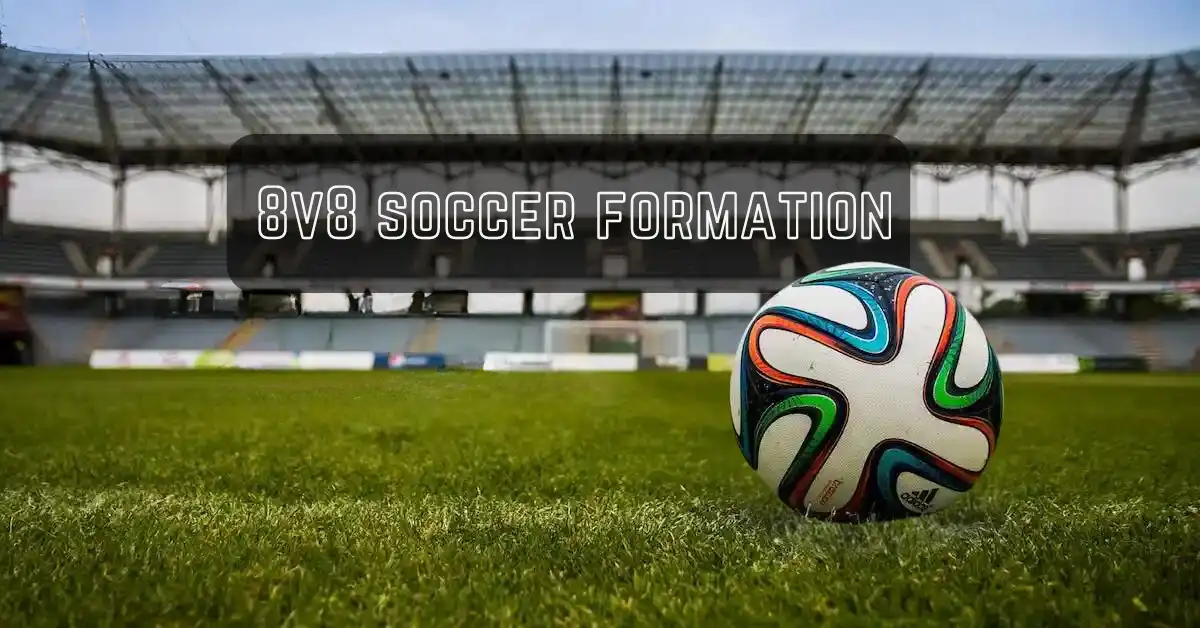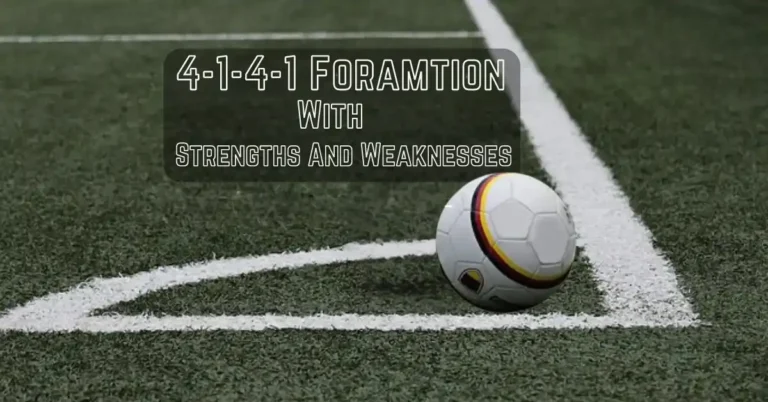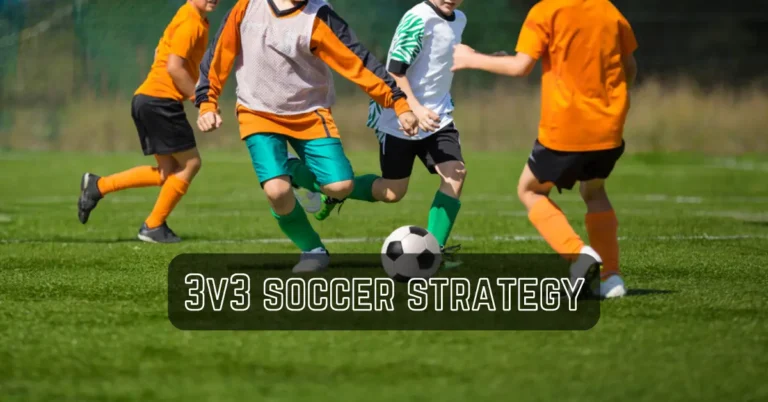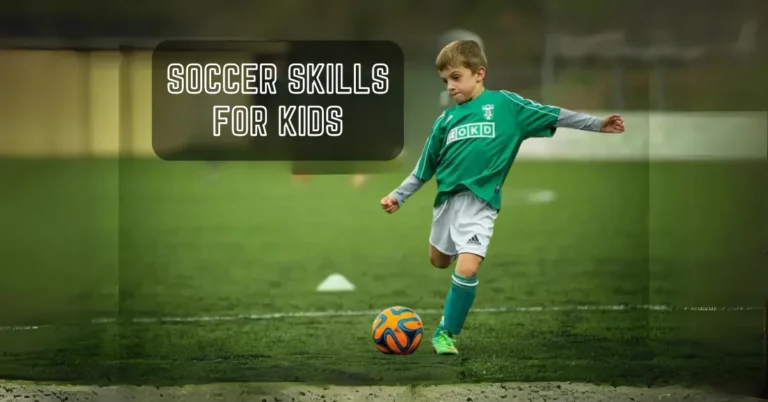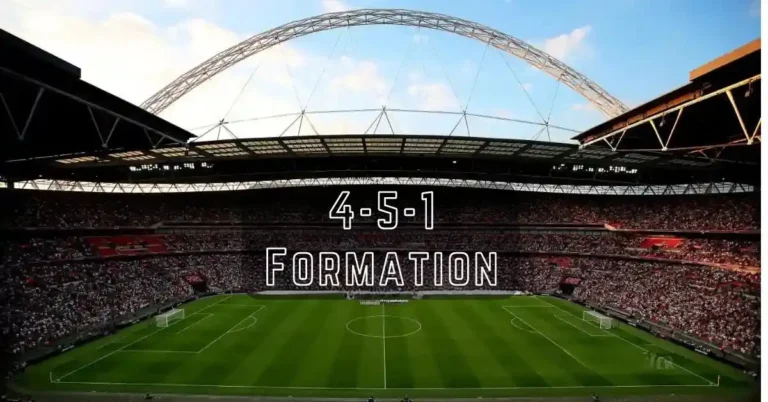8v8 Soccer Formations With Their Pros And Cons
8v8 soccer involves two teams of eight players each, navigating a slightly smaller field than traditional soccer. It is important to analyze the 8v8 soccer formations for success in the game. With this format, everyone has the opportunity to demonstrate their soccer skills.
Its dynamic and engaging nature has made the 8v8 format popular in soccer. 8v8 soccer is similar to 7v7 and 9v9 soccer having a smaller field and less number of players than traditional soccer (11v11).
4 Best 8v8 Soccer Formations
Here are four best 8v8 soccer formations that will help you to play 8v8 soccer effectively. You can choose the best formation for you from these four unusual 8v8 soccer formations. By analyzing the pros and cons you can find the best formation for you and can use the formation easily and effectively.
the 3-2-2 Formation
The 3-2-2 formation is included in the best 8v8 soccer formations and offers a balanced approach to both defense and attack, with solid defensive structures and dynamic forward movement.
This tactical setup, characterized by three defenders, two midfielders, and two forwards, offers a unique balance on the field.
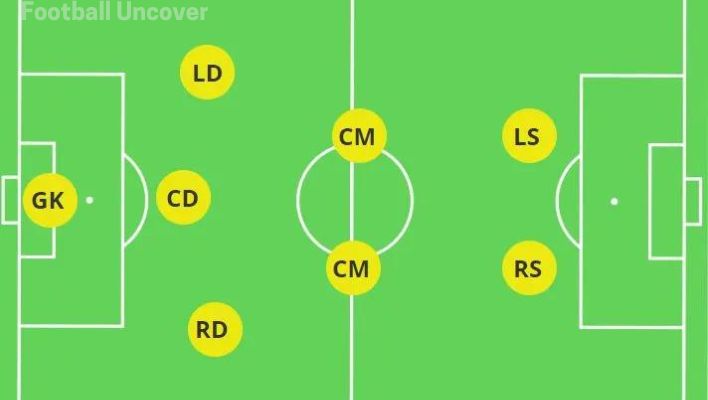
Pros of the 3-2-2 Formation
Solid Defensive Structure:
With three defenders at the back, the 3-2-2 formation provides a solid defensive structure. This can be particularly effective against opponents who rely on a single striker.
Midfield Control:
The two midfielders in the 3-2-2 formation can control the center of the pitch effectively. This enables the team to dictate the pace of the game, maintain possession, and launch attacks from a strong central position.
Versatility in Attack:
The two forwards have the flexibility to exploit spaces and create scoring opportunities. This dynamic forward movement can catch opposing defenses off guard, leading to increased goal-scoring chances.
Counterattacking Potential:
The 3-2-2 formation facilitates rapid transitions from defense to attack. With a solid defensive foundation and agile midfielders, teams can quickly capitalize on turnovers and catch opponents off balance.
Cons of the 3-2-2 Formation
Vulnerability on the Wings:
The absence of full-backs in the 3-2-2 formation leaves the flanks exposed. Opponents may exploit this weakness by attacking down the wings, sending overlapping wingers or full-backs to create numerical advantages in wide areas.
Limited Defensive Depth:
In the event of injuries or fatigue among the three defenders, the 3-2-2 formation may struggle to maintain defensive solidity. The lack of additional defensive players can leave the team vulnerable to sustained pressure.
Midfield Overcrowding:
While the formation allows for midfield control, it can lead to congestion in the central areas of the pitch. This may make it challenging for teams to break down compact defenses, as there is limited width in the attacking phase.
Dependency on Individual Performances:
The success of the 3-2-2 formation can be heavily dependent on the performances of key players, especially the midfield duo. Injuries or loss of form in these positions may disrupt the team’s overall balance.
The 2-3-2 formation
The 2-3-2 formation is included in the best 8v8 soccer formations and offers a unique balance between a solid defensive foundation, midfield control, and wide attacking options.
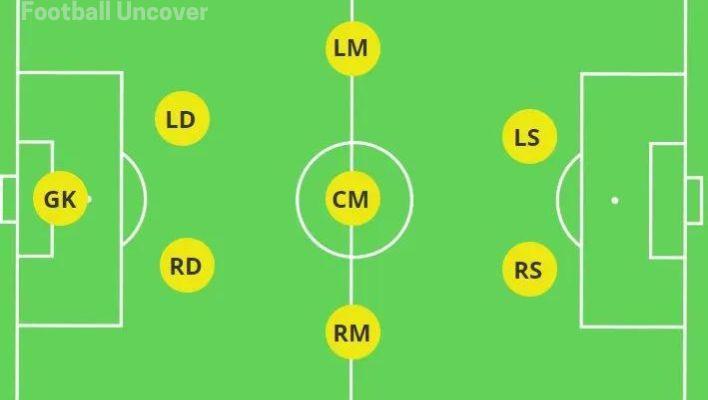
This formation is characterized by 2 defenders, 3 midfielders, and 2 forwards.
Pros of the 2-3-2 Formation
Midfield Dominance:
The 2-3-2 formation boasts a strong midfield with three players centrally positioned. This allows for better control of the game, as the team can dictate the tempo, maintain possession, and transition between defense and attack efficiently.
Defensive Balance:
With two defenders at the back, the 2-3-2 formation maintains a solid defensive structure. This can be effective against teams with a single striker, providing ample defensive coverage while allowing for a numerical advantage in other areas of the pitch.
Wide Attacking Options:
The two wingers in the 2-3-2 formation provide width to the team’s attacking play. This can stretch the opponent’s defense, creating space in the central areas for midfielders and forwards to exploit.
Quick Transition Play:
The 2-3-2 formation facilitates quick transitions from defense to attack. The solid defensive base, coupled with the ability to release wingers and forwards swiftly, enables the team to capitalize on turnovers and catch opponents off guard.
Cons of the 2-3-2 Formation
Exposure in Defense:
With only two defenders, the 2-3-2 formation can be susceptible to counterattacks, especially if the opposition exploits the spaces left behind when full-backs join the attack. Teams may struggle to defend against fast and direct opponents.
Midfield Overload:
While the central midfield trio provides control, it can lead to congestion in the middle of the pitch. Against well-organized defenses, breaking through crowded central areas may prove challenging, necessitating effective wide play.
Limited Defensive Depth:
Injuries or fatigue among the two defenders may pose a risk to the team’s defensive stability. The lack of additional defensive cover can leave the formation exposed when key players are unavailable.
Dependency on Wing Play:
The success of the 2-3-2 formation often hinges on the performance of the wide players. If opposing teams effectively nullify the impact of the wingers, the attacking options become limited, placing added pressure on the central players.
the 3-3-1 formation
The 3-3-1 formation is included in the 8v8 soccer formations and offers a unique blend of midfield control, defensive stability, and creative attacking play.
This formation seeks to balance defensive solidity with creative attacking play. It consists of 3 defenders, 3 midfielders and a forward.
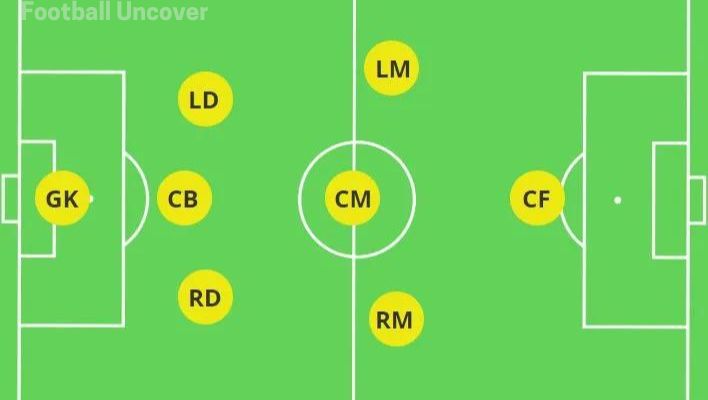
Pros of the 3-3-1 Formation
Midfield Control:
The 3-3-1 formation provides a numerical advantage in the midfield with three central midfielders. This allows for better control of possession, as the team can overload the central areas, dictate the tempo of the game, and transition smoothly between defense and attack.
Defensive Stability:
With three defenders at the back, the 3-3-1 formation offers a solid defensive foundation. This structure can thwart opponents’ attacks and minimize the risk of conceding goals, especially when facing teams with multiple attacking threats.
Versatility in Attack:
The central attacking midfielder (CAM) in the 3-3-1 formation acts as the playmaker, orchestrating attacks and linking up with the forward. This player has the freedom to roam and create goal-scoring opportunities, adding unpredictability to the team’s offensive play.
Adaptability to Opposition:
The formation allows for flexibility in the midfield, enabling adjustments based on the strengths and weaknesses of the opposing team. Coaches can deploy a defensive or attacking midfielder based on the specific requirements of the match.
Cons of the 3-3-1 Formation
Isolation of the Forward:
The single forward in the 3-3-1 formation may face isolation, especially if the central attacking midfielder is unable to provide adequate support. This can limit the team’s options in the final third and make it easier for opposing defenses to mark the lone striker.
Limited Width in Attack:
The absence of wide midfielders or wingers in the 3-3-1 formation can restrict the team’s ability to stretch the opponent’s defense. A lack of width may make it challenging to create space and opportunities in wide areas, potentially making the attack predictable.
Vulnerability on the Wings:
The formation may be susceptible to attacks down the wings, as there are fewer players available to provide defensive cover in wide areas. Opponents with strong wing play may exploit this vulnerability to create goal-scoring chances.
Risk of Overloading the Midfield:
The numerical emphasis on the midfield may leave the team susceptible to counterattacks. If the central midfielders commit too far forward, a quick turnover of possession could expose the defense, leading to counterattacking opportunities for the opposition.
the 2-4-1 (Diamond) formation
The 2-4-1 formation is included in the best 8v8 soccer formations. 2-4 1 formation often referred to as the Diamond formation, is a configuration that emphasizes a strong central midfield while maintaining defensive solidity and offensive versatility.
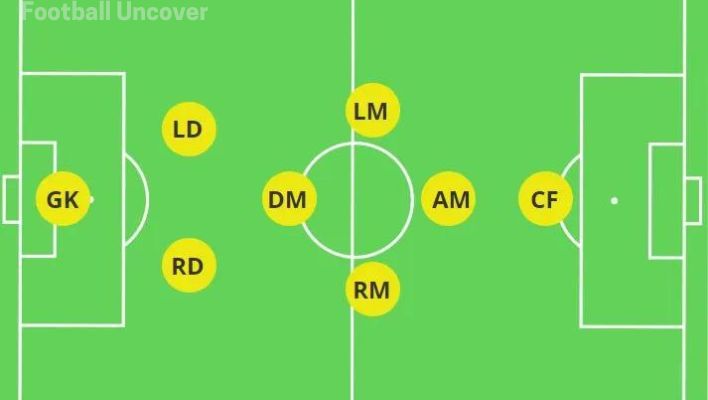
It consists of 2 defenders, 4 midfielders and a forward. We can also consider this formation as a 2-1-2-1-1 formation.
Pros of the 2-4-1 (Diamond) Formation
Central Midfield Dominance:
The 2-4-1 formation ensures a numerical advantage in the central midfield, with a diamond-shaped midfield comprising two central midfielders, a defensive midfielder, and an attacking midfielder. This allows for superior control of the midfield, enabling the team to dictate the tempo of the game.
Versatility in Attack:
The attacking midfielder in the diamond provides a focal point for creativity and playmaking. Positioned centrally, this player can link up with both midfielders and forwards, orchestrating attacks and creating goal-scoring opportunities.
Defensive Structure:
The 2-4-1 formation maintains a balanced defensive structure with two central defenders supported by a defensive midfielder. This setup can withstand opposing attacks and minimize the risk of conceding goals.
Options for Width:
The two full-backs in the 2-4-1 formation have the freedom to overlap and provide width in attack. This can stretch the opponent’s defense, creating space for midfielders and allowing for diverse attacking options.
Cons of the 2-4-1 (Diamond) Formation
Vulnerability in Wide Areas:
The formation’s focus on central dominance can leave the flanks vulnerable to opposition attacks. If the full-backs push forward, the team may be susceptible to counterattacks down the wings, especially if the wingers do not track back effectively.
Isolation of the Lone Striker:
The lone striker may face isolation, particularly if the central attacking midfielder is unable to provide consistent support. This can lead to limited options in the final third and make it easier for opposing defenses to mark the lone striker.
Dependency on Full-backs:
The success of the formation relies heavily on the ability of the full-backs to contribute offensively while maintaining defensive responsibilities. If they are unable to balance these roles effectively, the team may struggle to maintain both defensive solidity and attacking threat.
Risk of Overcrowding the Midfield:
While central dominance is a strength, it can also lead to congestion in the middle of the pitch. Against well-organized defenses, breaking through crowded central areas may prove challenging, requiring effective ball circulation and movement.
FAQs
The 2-3-2 formation is the best-balanced formation for 8-man soccer. It provides a balanced structure for both offending and defending.
This tactical setup, characterized by three defenders, two midfielders, and two forwards, offers a unique balance on the field.
No, there is no offside in 8v8 because of the small field and less number of players.
Number eight plays as a box-to-box central midfielder, handling both attacking and defensive responsibilities.
conclusion
8v8 soccer formations add an exciting dimension to the sport. From the tactical intricacies to the developmental benefits, by exploring these formations you can find the best formation for you. You can make yourself batter in 8v8 soccer by using these formations. Elevate your game now.

